Silence: A Profound Religious and Historical Drama by Martin Scorsese
Martin Scorsese’s “Silence” is a powerful and deeply moving religious-historical drama that delves into the persecution of Christians in 17th-century Japan.
The film plunges us into a Japan where Christianity is brutally suppressed. Western missionaries, who brought this foreign faith to the country, are hunted down, and believers are subjected to horrific torture and sadistic executions. Witnessing the atrocities committed against Christians in a land once receptive to their faith, the Jesuit order ceases sending representatives to Japan. However, two young Portuguese priests, Rodrigues (Andrew Garfield) and Garupe (Adam Driver), driven by unwavering faith and a sense of duty, embark on a perilous journey to the Land of the Rising Sun. Their mission: to find their mentor, Ferreira (Liam Neeson), who is rumored to have apostatized and embraced Buddhism. The Jesuits refuse to believe that the renowned monk could have fallen so low, and they are determined to uncover the truth, even if it means facing martyrdom themselves.
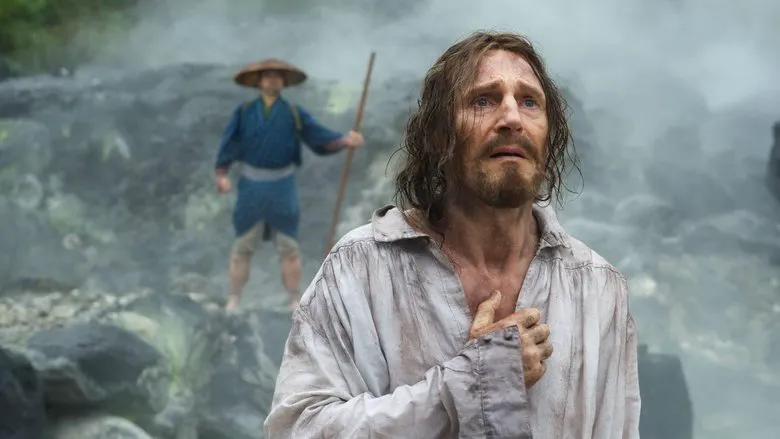 .jpg “Silence Film Still”)
.jpg “Silence Film Still”)
The Source Material and Scorsese’s Vision
Scorsese’s new religious-historical drama is based on a remarkable literary work. While the novel “Silence” centers on Western characters, it was penned by Japanese author Shūsaku Endō, a prominent figure in post-war Eastern literature and a devout Catholic. Living as a Christian in a predominantly Buddhist-Shinto society, Endō dedicated much of his writing to exploring the cultural duality of “religious outcasts.” “Silence” is considered the pinnacle of his philosophy, reflecting his persistent doubts about the Christian faith and its relevance within Japanese society and its spiritual context.
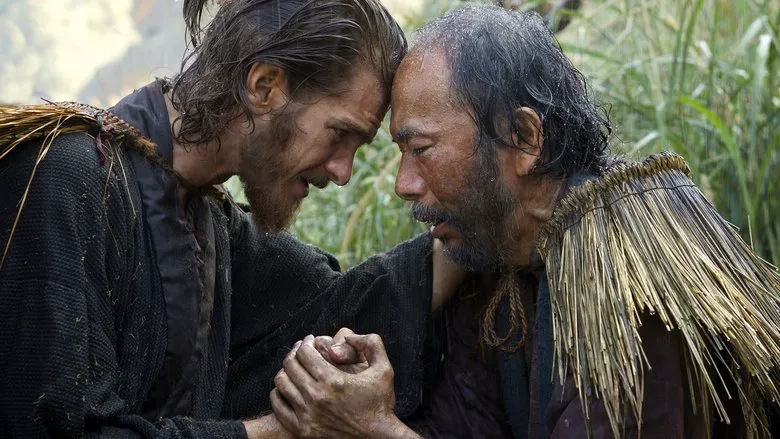 .jpg “Silence Film Still”)
.jpg “Silence Film Still”)
Interestingly, both Father Ferreira and the “Inquisitor” Inoue are based on real historical figures. It is even rumored that Inoue’s career advanced due to his relationship with Shogun Iemitsu Tokugawa, the military ruler of Japan.
Endō’s novel was previously adapted into a Japanese film in 1971, but the author was dissatisfied with Masahiro Shinoda’s interpretation. He was thrilled to learn that Martin Scorsese, a devout director with a Catholic background, was interested in “Silence.” Endō believed that Scorsese could not only capture the events of the novel but also deeply understand the religious dilemmas that torment Ferreira and Rodrigues (unlike their companion, Garupe, who is portrayed as simple and straightforward in his fanaticism). Sadly, Scorsese faced numerous delays in starting production, and Endō passed away before the film’s premiere. However, it is likely that he would have appreciated Scorsese’s work. Despite its historical setting and dramatic intensity, “Silence” is, above all, a powerful religious film that grapples with the eternal questions of Christianity.

Faith Tested: The Dilemma of Rodrigues
Upon their arrival in Japan, Rodrigues and Garupe are unwavering in their faith. The young priests are determined to minister to the hidden Christians. While the Jesuits are well-versed in religious matters, they are astonished by the strength of the Japanese believers. Simple, impoverished, and uneducated people risk their lives daily to shelter priests and practice their faith in secret. They willingly face martyrdom, even though a single symbolic act of renouncing their faith – stepping on carved icons known as “fumie” – would grant them freedom. Although the Japanese understanding of Christianity differs from Western theological nuances, the Jesuits could not hope for a more devoted flock. They hope to face martyrdom with equal courage when their time comes.
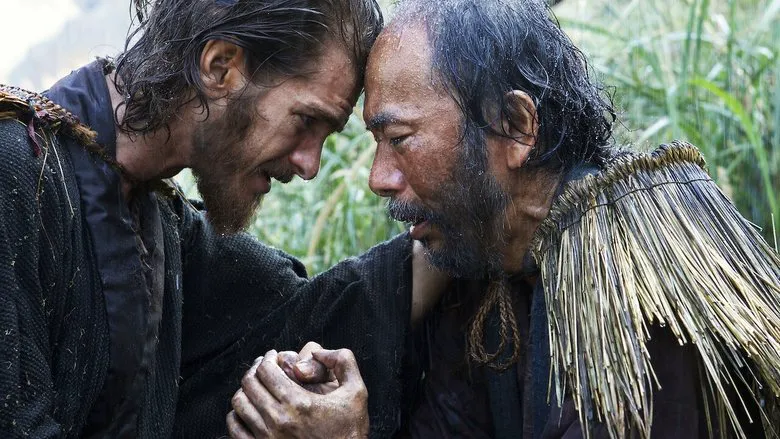
However, their time does not come in the way they expect. The Japanese “Inquisitor,” tasked with eradicating Christianity, understands that martyrdom strengthens rather than weakens the Western faith. He employs a more cunning and subtle approach. He attempts to convince Rodrigues, the film’s protagonist, that Japan does not need Christianity, as it already possesses a rich religious culture. He accuses the foreigner of vanity and arrogance, arguing that he knows little about the country and its language, yet presumes to dictate which truths should be preached in Japan. When persuasion fails, the “Inquisitor” orders the torture and execution of Christians and former Christians before Rodrigues’ eyes, hoping to force him to renounce his faith.
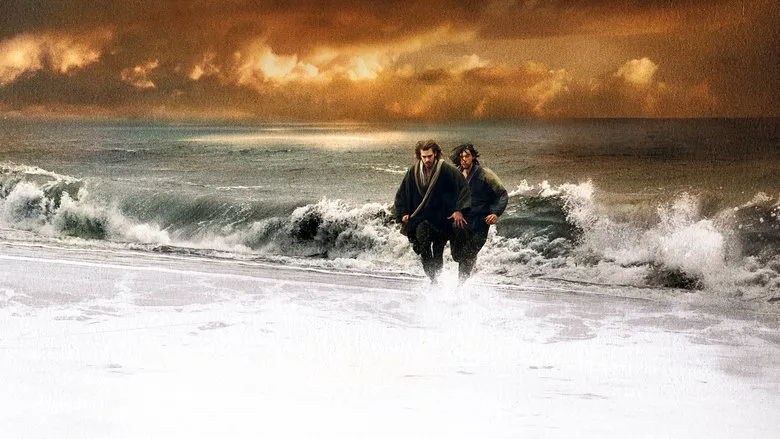 .jpg “Silence Film Still”)
.jpg “Silence Film Still”)
An Impossible Choice
This Japanese sadism presents the Jesuit with an impossible choice. On the one hand, he understands that he serves as an example for many secret Christians. What will they think if they learn that one of the last Western priests in the country has publicly rejected his faith? Will they follow his example, or will they remain steadfast in their beliefs? On the other hand, there is no greater torment for him than to witness people dying because of his steadfastness, not all of whom are guaranteed a martyr’s place in heaven. Who is he to essentially send people to their deaths? Is his faith strong enough for that? And why is God silent, the voice of whom Rodrigues sometimes heard when he lived in Europe? Why does the Lord allow believers to suffer such torment in Japan? And if Rodrigues publicly renounces Christianity, will God accept his inner repentance, which the former priest will be unable to express in word or deed?
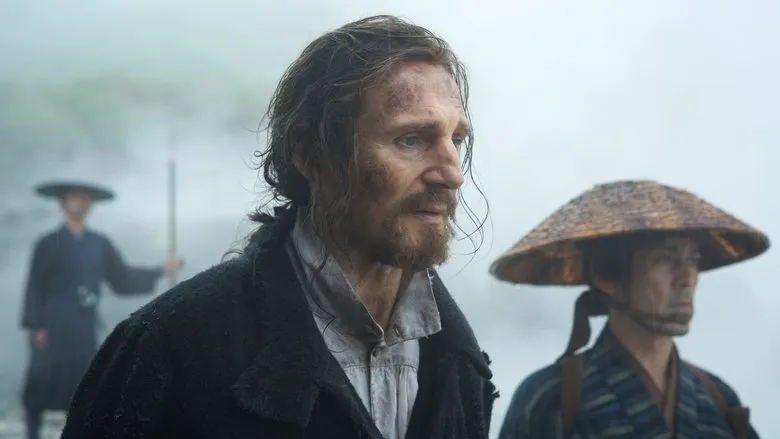 .jpg “Silence Film Still”)
.jpg “Silence Film Still”)
“Silence” does not merely contemplate these terrifying questions; it empathetically experiences them alongside its protagonist. Frankly, Andrew Garfield is not entirely convincing as a 17th-century man. However, unlike Leonardo DiCaprio’s performance in “Gangs of New York,” which detracted from the film, Garfield’s portrayal in “Silence” enhances it. Rodrigues is essentially a modern man born in the past, and his gentleness and humanism become the threads that the “Inquisitor” manipulates. Furthermore, Rodrigues’ modernity makes him an excellent guide into a mysterious world, foreign to both the character and the audience.
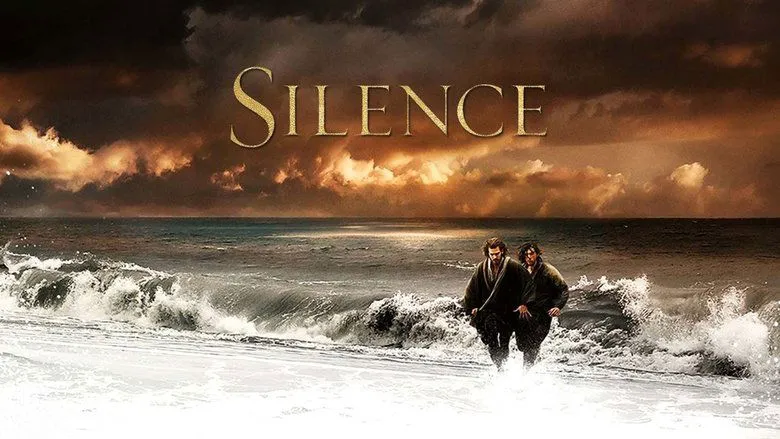
Stellar Performances
The Japanese actors are exceptionally convincing and perfectly cast. Issey Ogata is particularly impressive as the simultaneously comical and cunning “Inquisitor” (the actor previously played the Emperor in Sokurov’s “The Sun”), as is Yosuke Kubozuka as the weak-willed Christian Kichijiro. The latter repeatedly betrays his comrades but never truly abandons his faith, returning each time to seek forgiveness. Kichijiro becomes a kind of Judas to Rodrigues’ Jesus, providing the audience with the main reason to reflect on forgiveness and redemption.
As for Liam Neeson, he spends very little time on screen but makes the most of it. The former Jedi’s powerful charisma makes him astonishing in the pivotal scene when Rodrigues finally meets his teacher and discusses matters of faith and betrayal. Although Ferreira does not say what Rodrigues and the faithful viewers in the audience want to hear, his words demand attention and contemplation, rather than being dismissed outright, as they surely would be if spoken by a different actor. This one scene is enough to understand why Rodrigues and Garupe were so devoted to their mentor that they would follow him to their deaths. And the epithet “Jesuitical” in relation to Ferreira sounds both like a reproach and a compliment.